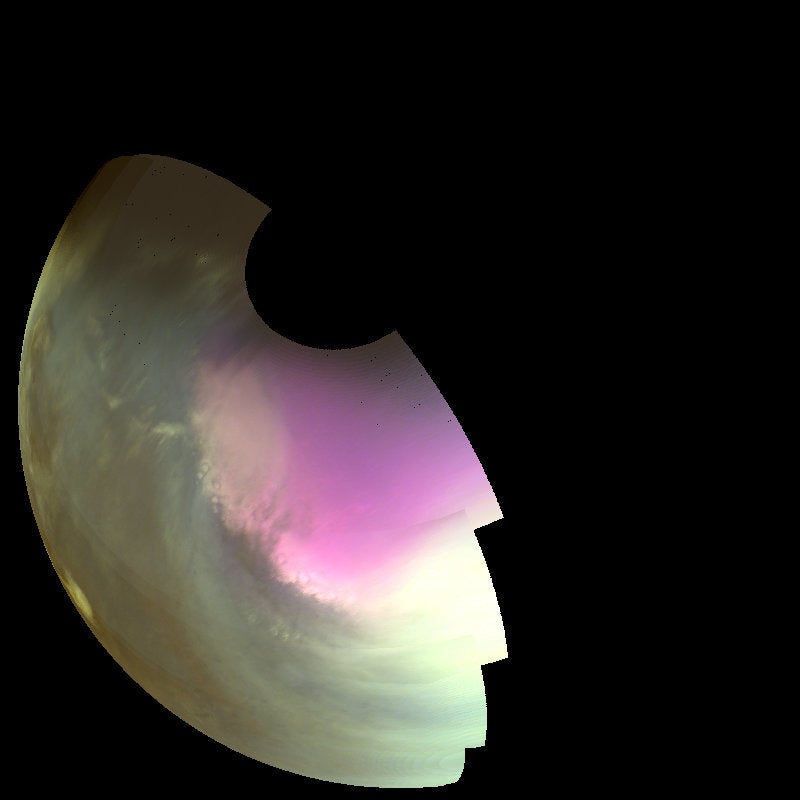The NASA MAVEN space probe has captured some stunning images of Mars in the ultraviolet spectrum.
The images give us an unprecedented view of the Martian atmosphere revealing how wind patterns occur at high altitude while also giving us a rare glimpse of how clouds form around some of Mars’ largest volcanoes.
NASA then compiled the images from a period of seven hours and stitched them together to form this tantalising video (see above).
What we’re seeing in these images in an effect called “nightglow”. It’s caused by emissions of nitric oxide and is a planetary phenomenon which means that the night sky can sometimes glow, even in the absence of any external light.

How does “nightglow” occur on Mars?
“Mars’ nightside atmosphere emits light in the ultraviolet due to chemical reactions that start on Mars’ dayside. Ultraviolet light from the sun breaks down molecules of carbon dioxide and nitrogen, and the resulting atoms are carried around the planet by high-altitude wind patterns that encircle the planet. On the nightside, these winds bring the atoms down to lower altitudes where nitrogen and oxygen atoms collide to form nitric oxide molecules. The recombination releases extra energy, which comes out as ultraviolet light.”
These images also contain some of the clearest examples yet of Mars cloud formations.
Understanding how Mars’ cloud formations behave is crucial to understanding how the planet’s energy balance and also its water vapour inventory.
